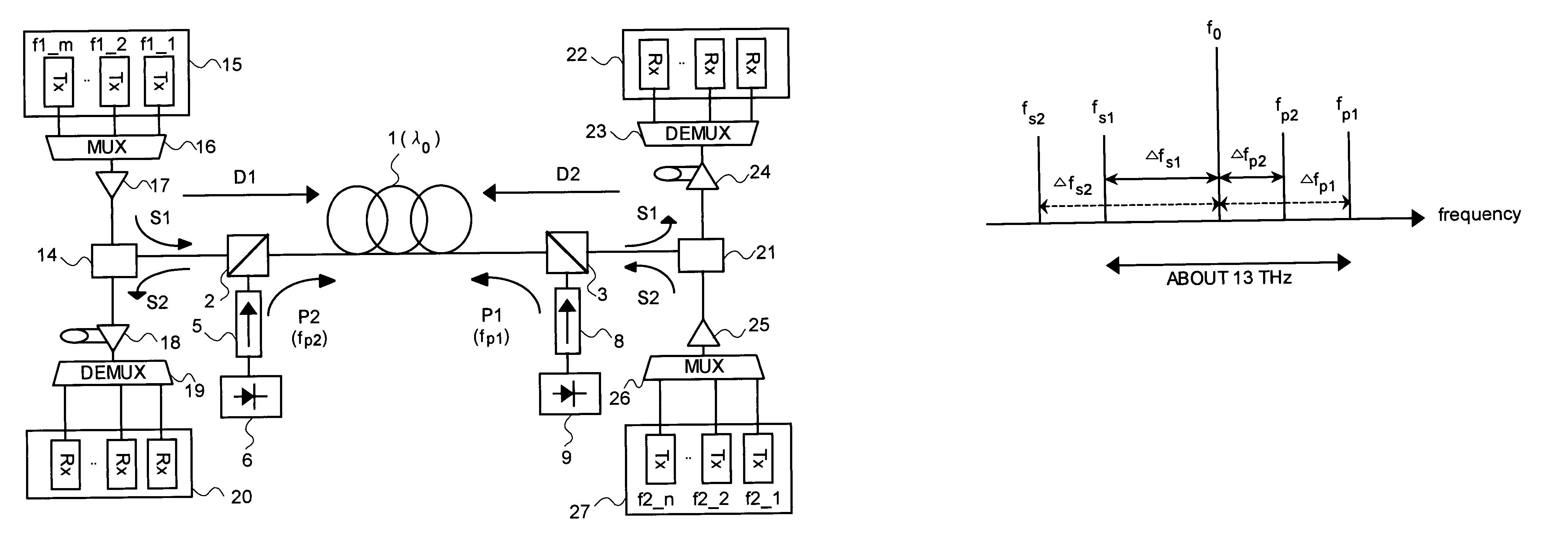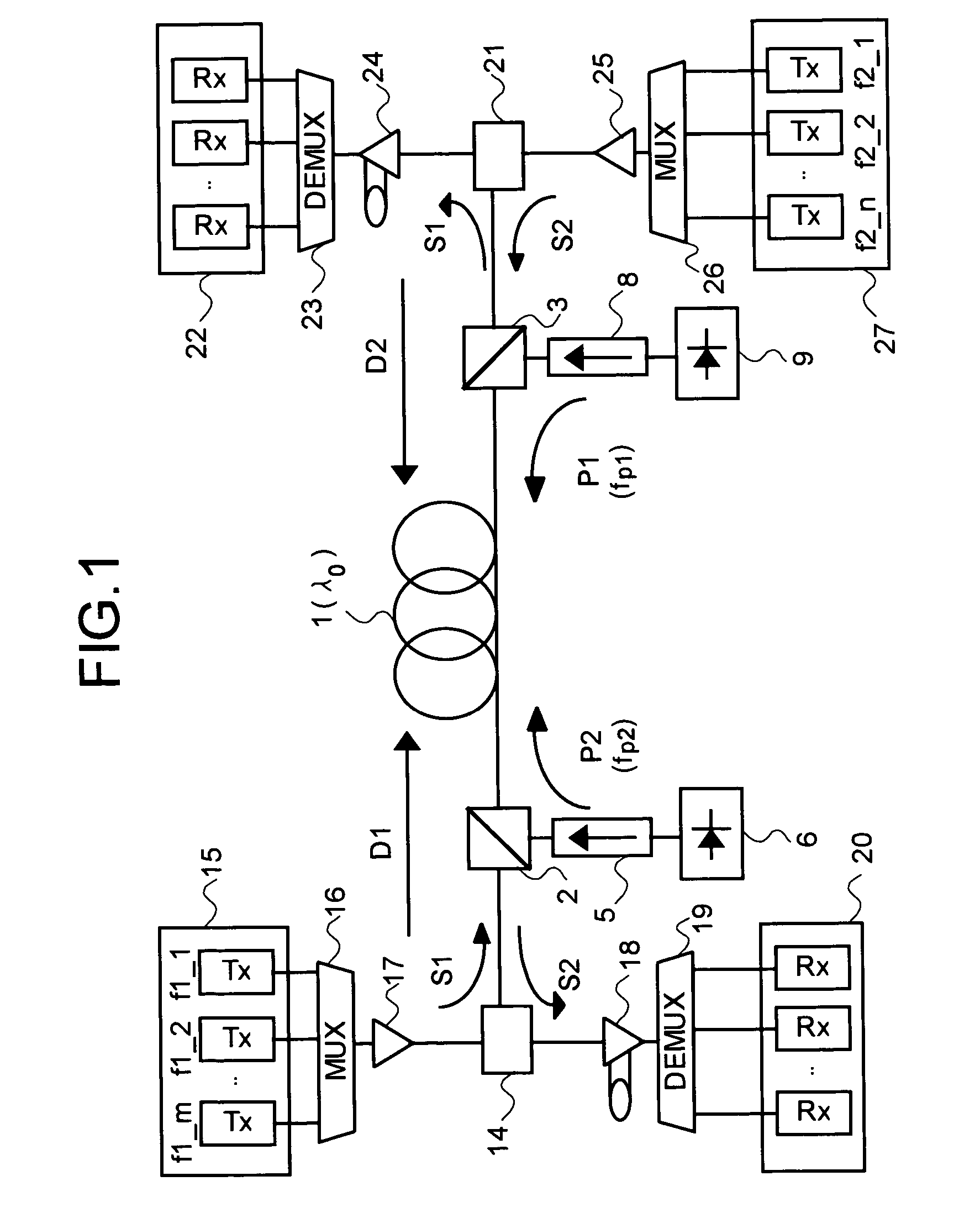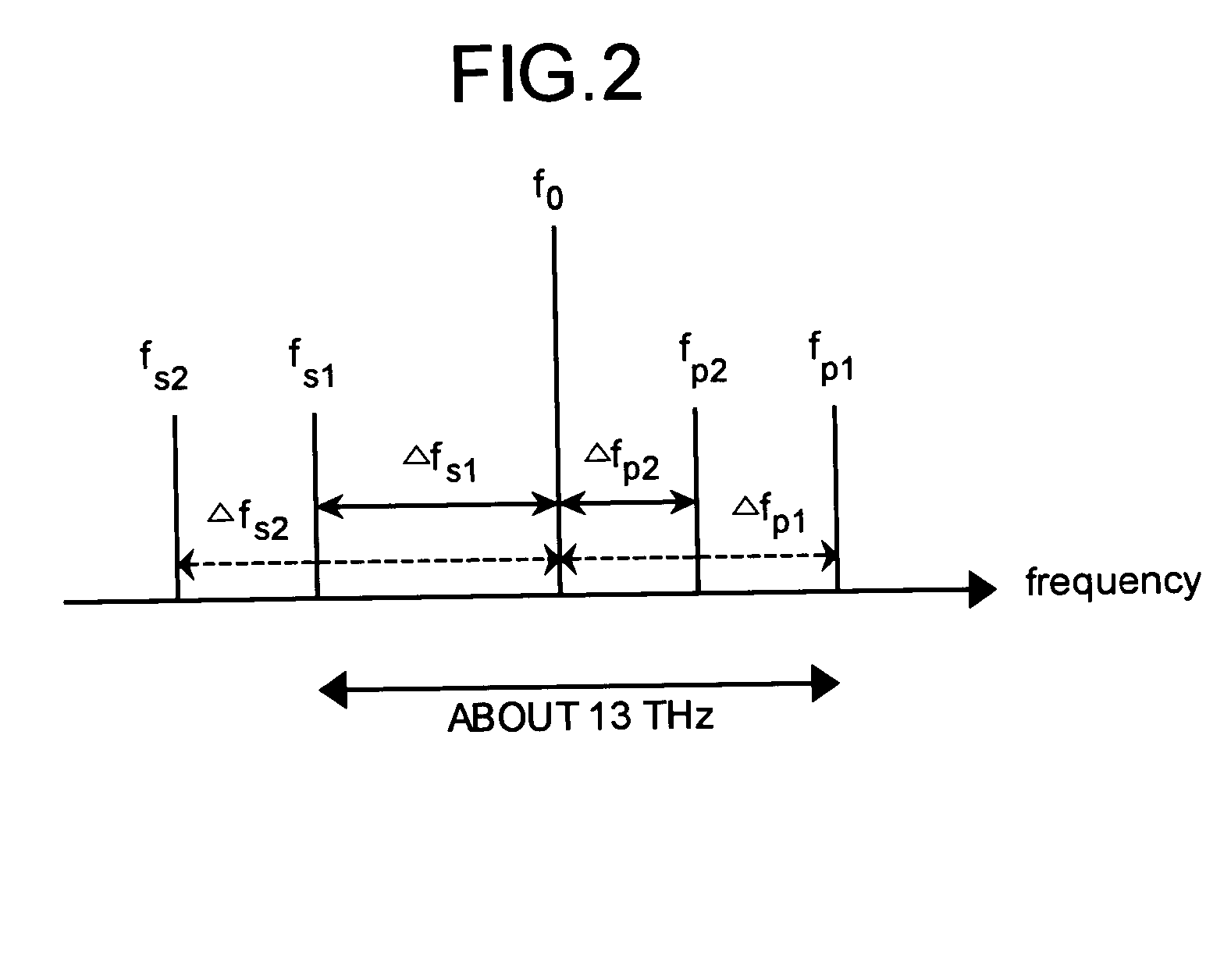One-core two-way optical transmission system
a transmission system and optical transmission technology, applied in the field of onefiber bidirectional optical transmission system, can solve the problems of deterioration of frequency-multiplexed signal, system likely to be affected by four wave mixing, etc., and achieve the effect of high transmission quality
- Summary
- Abstract
- Description
- Claims
- Application Information
AI Technical Summary
Benefits of technology
Problems solved by technology
Method used
Image
Examples
first embodiment
[0053]FIG. 1 is a schematic diagram of the one-fiber bidirectional optical transmission system according to a first embodiment of the present invention. A frequency-selective optical coupler 2 and a frequency-selective optical coupler 3 are respectively connected to one input-output terminal and the other input-output terminal of an operation transmission line 1. To the optical coupler 2 are connected an optical coupler 14 and an optical isolator 5. To the optical isolator 5 is connected a Raman pump source 6. A second Raman pump light P2 generated by the Raman pump source 6 is injected into the optical coupler 2 via the optical isolator 5.
[0054]An optical transmitter 15 includes a plurality of transmitters Tx1—1 to Tx1—m, and these transmitters Tx1—1 to Tx1—m respectively generate signal lights of different frequencies (f1—1 to f1—m). A frequency band where the signal lights are generated is, for example, a frequency band of from 191.6 terahertz to 195.9 terahertz (wavebands of fro...
second embodiment
[0073]FIG. 3 is a schematic diagram of the one-fiber bidirectional optical transmission system according to a second embodiment of the present invention. In the first embodiment, the first signal light S1 and the second signal light S2 respectively have a single frequency. In the second embodiment, however, the first signal light S1 and the second signal light S2 are respectively frequency-multiplexed signal lights. The pumping method is the backward pumping method as in the first embodiment.
[0074]In FIG. 3, the first frequency-multiplexed signal lights S1 are input to the input-output terminal 4, and the second frequency-multiplexed signal lights S2 are input to the input-output terminal 7. The other configuration is the same as that shown in FIG. 1.
[0075]The first Raman pump light P1 generated by the Raman pump source 9 is a pump light of a predetermined frequency, wherein a Raman gain band capable of Raman amplification includes frequency bands of the first frequency-multiplexed ...
third embodiment
[0078]FIG. 5 is a schematic diagram of the one-fiber bidirectional optical transmission system according to the third embodiment. In the third embodiment, a plurality of Raman pump lights is used instead of the Raman pump light of a single frequency in the second embodiment shown in FIG. 3.
[0079]In FIG. 5, Raman pump sources 6 and 9 that generate Raman pump lights of a plurality of frequencies are provided instead of the Raman pump sources 6 and 9 that generate a single Raman pump light, in the configuration shown in FIG. 3. Accompanying this, frequency couplers 10 and 11 are respectively provided between the Raman pump sources 6 and 9 and the optical isolators 5 and 8. The other configuration is the same as that shown in FIG. 3, and hence a part relating to the third embodiment will be mainly explained here.
[0080]A plurality of Raman pump sources 9-1, . . . , 9-r equipped in a Raman pump source section 9 generate Raman pump lights having frequencies different from each other. The R...
PUM
| Property | Measurement | Unit |
|---|---|---|
| zero dispersion wavelength | aaaaa | aaaaa |
| zero dispersion wavelength | aaaaa | aaaaa |
| zero dispersion wavelength | aaaaa | aaaaa |
Abstract
Description
Claims
Application Information
 Login to View More
Login to View More - R&D
- Intellectual Property
- Life Sciences
- Materials
- Tech Scout
- Unparalleled Data Quality
- Higher Quality Content
- 60% Fewer Hallucinations
Browse by: Latest US Patents, China's latest patents, Technical Efficacy Thesaurus, Application Domain, Technology Topic, Popular Technical Reports.
© 2025 PatSnap. All rights reserved.Legal|Privacy policy|Modern Slavery Act Transparency Statement|Sitemap|About US| Contact US: help@patsnap.com



